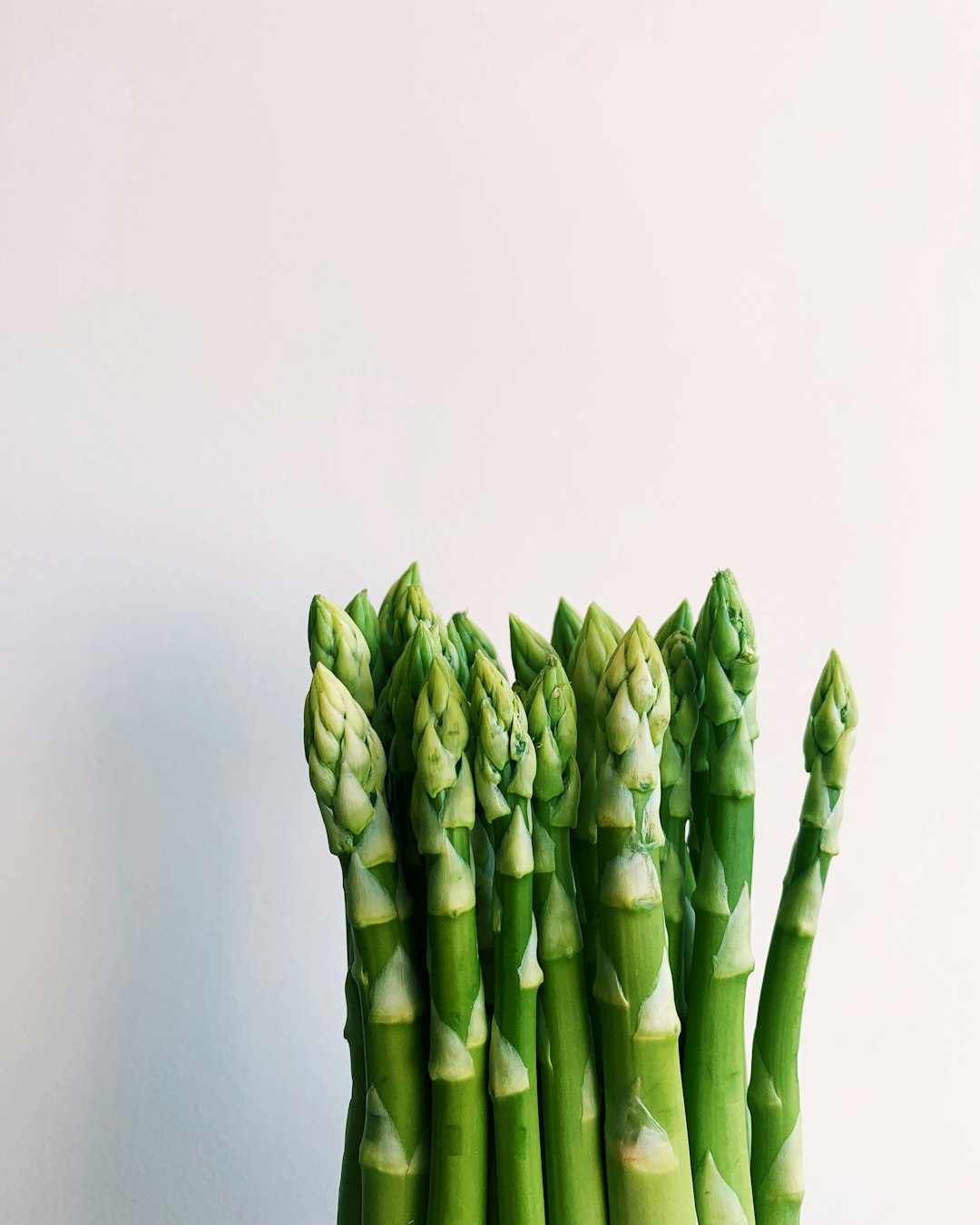Given how much time people who are lucky enough to have a garden spend uprooting weed grass from plots, it’s pretty rum just how much time is invested in growing edible grass. Oh, you guessed already. Yes, the grass in this case is asparagus, also known as sparrow grass.

It takes dedication to create an asparagus bed - as long as seven years to produce enough spears for a decent meal. Asparagus can be established from seed if you’re prepared to wait an even longer time for supper. Planting bare-root asparagus crowns is the short cut, though any spears that appear from the crowns must be zealously ignored for the first two years after planting. To pick them before will stunt future production. But once established, if properly tended, a single plant should produce 25 spears a year for the same number of years. My father devoted enough care and attention to his sparrow grass bed, as he called it, that our family of four feasted off it for a month.
You can, of course, feast off asparagus every single month, if you find it reasonable to have it flown to your plate from Peru or Mexico or some other country unlikely to be close to yours. If there was one single vegetable to promote the benefits of ‘local’ and ‘seasonal’ in terms of increased intensity of flavour, it is asparagus.
Once upon a time, the plant was classified as a member of the lily family but asparagus is unusual in that it is now recognised as its very own genus. Found across Europe and western Asia, it’s an ancient flowering plant, even featuring as an offering in an Egyptian frieze dating back to 3000 BC. Emperor Augustus, who straddled BC (63) and AD (14) though is unlikely to have been aware of it, was such a fan he created the Asparagus Fleet to transport the delicacy to his kitchens. He came up with “Faster than cooking asparagus” as an expression for speed. It’s a shame t-shirts weren’t A Thing back then. What the ancient Greeks and Romans didn’t eat fresh in spring, they used to dry for winter. Those who lived in the high Alps even froze the spears, for serving in January at the Feast of Epicurus. There’s a recipe for asparagus in the third edition of Apicius’s De re Coquinaria, one of the oldest cookbooks, first published in 3 BC.
Sparrow grass not just valued as a vegetable but respected for its medicinal properties. It’s considered a useful prebiotic for its ability to boost good bacteria in the digestive system and to help with ulcerative colitis. Its fibre and flavonoid compounds have been thought to ease hangovers and reduce liver damage caused by alcohol. It’s even cited as an aphrodisiac in the 15th century Arab sex manual ‘The Perfumed Garden’. Would this have been known in the monasteries across France, where by 1469 it was being commonly cultivated? Three hundred years later, Madame de Pompadour was certainly aware, declaring she relished being fed what were called points d'amour. One imagines she must have used a toilette some way away from the boudoir. Asparagus guzzlers will be familiar with its diuretic powers and the resultant reek.
While the French took to asparagus, it wasn’t much bothered with by the English until 1538, nor by the Germans (who prefer the fat blanched white variety) until 1542. By 1667, however, Londoner Samuel Pepys mentioned in his diary that he’d bought a bundle of “sparrow grass” in Fenchurch Street. It had arrived in North America earlier. Adriaen van der Donck, a Dutch immigrant to New Netherland, mentions the farming of it in 1655, while one of William Penn’s advertisements promoting the advantages of life in Pennsylvania cites asparagus among other crops to profit from the American climate.
Until quite recently asparagus was only steamed, boiled or blanched, for serving warm with melted butter or cold with vinaigrette. Now, though, it’s grilled and roasted, baked under sauces, served raw, and pickled. But I still think the original French versions that leave it barely messed with are the best. However, if your asparagus bed has produced only a handful of spears, here’s a recipe that makes the most of them.
Serves 4
1 small shallot, peeled and finely chopped
2 tablespoons butter
300g/10½ ounces peas, podded weight if fresh
6-8 leaves fresh mint
100ml/5½ tablespoons single/table cream
Salt and freshly ground black pepper to taste
80ml/4½ tablespoons olive oil
1 small bunch of chives, chopped, 2 chive stems per serving retained whole
4 eggs
1 large bunch of asparagus, washed and trimmed
pea shoots (optional)
Sweat the shallots in the melted butter. Boil the peas till tender. Drain, reserving a cup of the water, and add with the cream and mint to the shallot pan. Blend to a puree, adding a littlepea water to loosen if necessary. Taste, season and cover with cling film.
To make the chive oil, add the chives and the oil to the cleaned blender and puree. Sieve and reserve the oil.
Soft boil eggs for 6-7 minutes and peel. Boil the asparagus 2 to 3 minutes in a large pan of well-salted water till still a little al dente. Remove with a slotted spoon to a paper towel.
Smear a large spoonful of puree onto each plate, add 4-5 asparagus stalks to each plate, slice an egg in two, lay alongside and drizzle round the chive oil. To decorate, lay 2 chive stems crossed on top of the dish or a sprig of pea shoot if you’re feeling fancy.



Yum!!! Sounds delicious, thanks!
The rhubarb, garlic, and chives are growing nicely, but we are still eagerly awaiting the sight of our asparagus breaking ground. We are on year three of our bed, and will be able to have our first generous servings. Last year, we allowed ourselves exactly two spears each, and they were the sweetest, tenderest asparagus of my life.